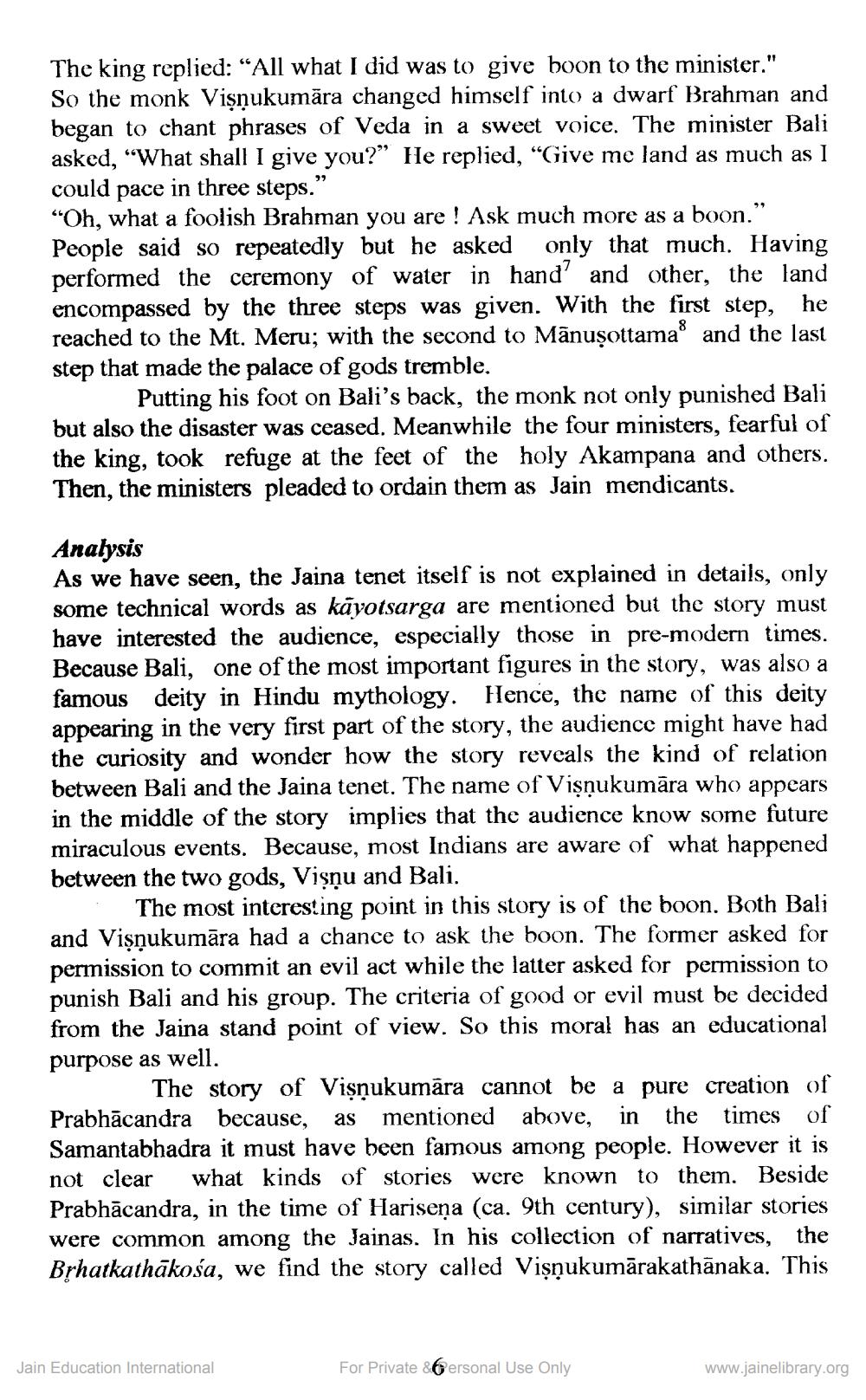Book Title: Jinamanjari 1998 09 No 18 Author(s): Jinamanjari Publisher: Canada Bramhi Jain Society Publication View full book textPage 8
________________ The king replied: “All what I did was to give boon to the minister." So the monk Vişnukumāra changed himself into a dwarf Brahman and began to chant phrases of Veda in a sweet voice. The minister Bali asked, "What shall I give you?” He replied, "Give me land as much as I could pace in three steps." “Oh, what a foolish Brahman you are ! Ask much more as a boon.” People said so repeatedly but he asked only that much. Having performed the ceremony of water in hand? and other, the land encompassed by the three steps was given. With the first step, he reached to the Mt. Meru; with the second to Mānuşottama and the last step that made the palace of gods tremble. Putting his foot on Bali's back, the monk not only punished Bali but also the disaster was ceased. Meanwhile the four ministers, fearful of the king, took refuge at the feet of the holy Akampana and others. Then, the ministers pleaded to ordain them as Jain mendicants. Analysis As we have seen, the Jaina tenet itself is not explained in details, only some technical words as kāyotsarga are mentioned but the story must have interested the audience, especially those in pre-modern times. Because Bali, one of the most important figures in the story, was also a famous deity in Hindu mythology. Hence, the name of this deity appearing in the very first part of the story, the audience might have had the curiosity and wonder how the story reveals the kind of relation between Bali and the Jaina tenet. The name of Vişnukumāra who appears in the middle of the story implies that the audience know some future miraculous events. Because, most Indians are aware of what happened between the two gods, Visnu and Bali. The most interesting point in this story is of the boon. Both Bali and Vişnukumāra had a chance to ask the boon. The former asked for permission to commit an evil act while the latter asked for permission to punish Bali and his group. The criteria of good or evil must be decided from the Jaina stand point of view. So this moral has an educational purpose as well. The story of Vişņukumāra cannot be a pure creation of Prabhācandra because, as mentioned above, in the times of Samantabhadra it must have been famous among people. However it is not clear what kinds of stories were known to them. Beside Prabhācandra, in the time of Harisena (ca. 9th century), similar stories were common among the Jainas. In his collection of narratives, the Byhatkathākośa, we find the story called Vişnukumārakathānaka. This Jain Education International For Private 6ersonal Use Only www.jainelibrary.orgPage Navigation
1 ... 6 7 8 9 10 11 12 13 14 15 16 17 18 19 20 21 22 23 24 25 26 27 28 29 30 31 32 33 34 35 36 37 38 39 40 41 42 43 44 45 46 47 48 49 50 51 52 53 54 55 56 57 58 59 60 61 62 63 64 65 66 67 68 69 70 71 72 73 74 75 76
